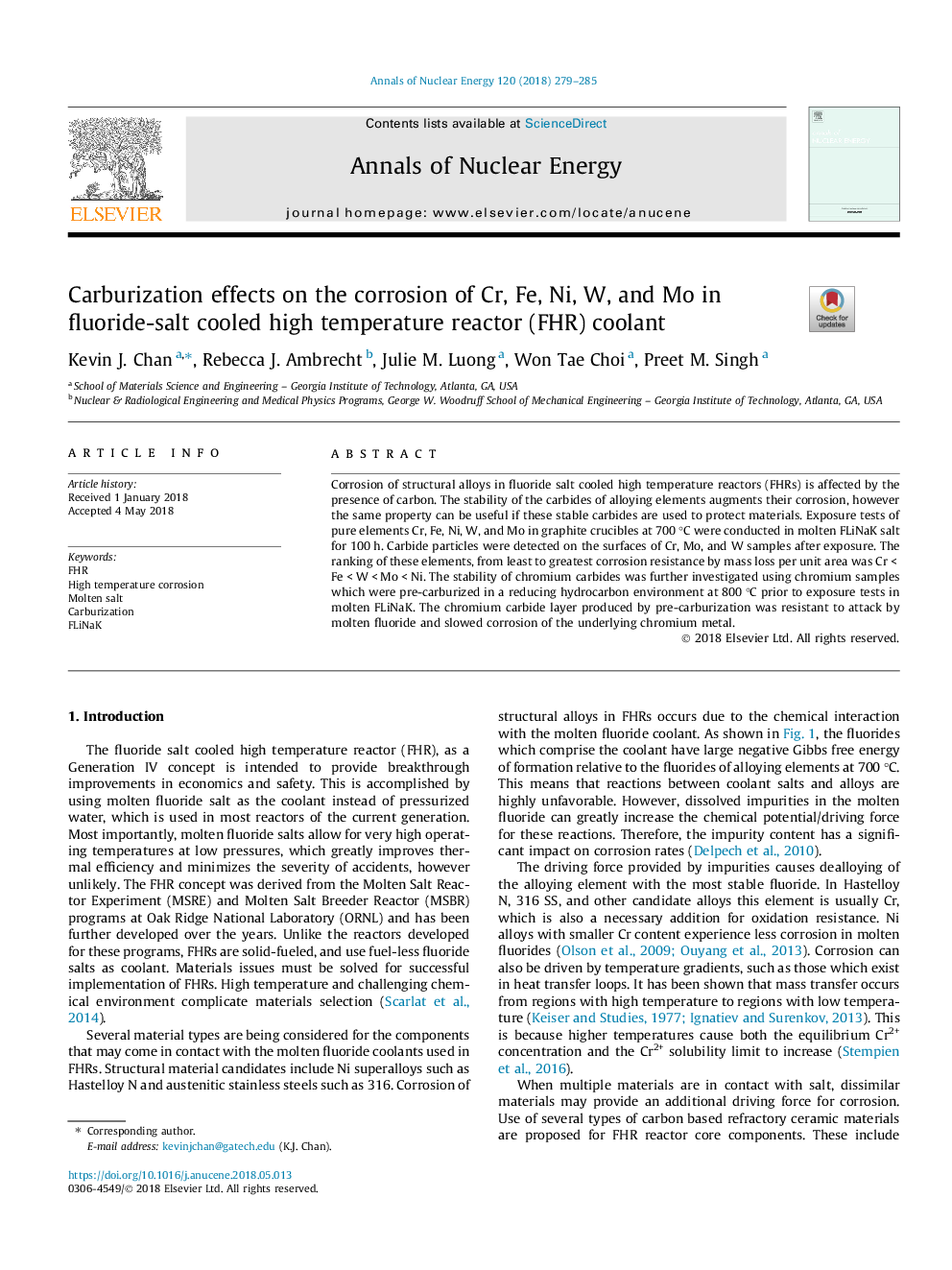| Article ID | Journal | Published Year | Pages | File Type |
|---|---|---|---|---|
| 8066841 | Annals of Nuclear Energy | 2018 | 7 Pages |
Abstract
Corrosion of structural alloys in fluoride salt cooled high temperature reactors (FHRs) is affected by the presence of carbon. The stability of the carbides of alloying elements augments their corrosion, however the same property can be useful if these stable carbides are used to protect materials. Exposure tests of pure elements Cr, Fe, Ni, W, and Mo in graphite crucibles at 700â¯Â°C were conducted in molten FLiNaK salt for 100â¯h. Carbide particles were detected on the surfaces of Cr, Mo, and W samples after exposure. The ranking of these elements, from least to greatest corrosion resistance by mass loss per unit area was Crâ¯<â¯Feâ¯<â¯Wâ¯<â¯Moâ¯<â¯Ni. The stability of chromium carbides was further investigated using chromium samples which were pre-carburized in a reducing hydrocarbon environment at 800â¯Â°C prior to exposure tests in molten FLiNaK. The chromium carbide layer produced by pre-carburization was resistant to attack by molten fluoride and slowed corrosion of the underlying chromium metal.
Related Topics
Physical Sciences and Engineering
Energy
Energy Engineering and Power Technology
Authors
Kevin J. Chan, Rebecca J. Ambrecht, Julie M. Luong, Won Tae Choi, Preet M. Singh,
